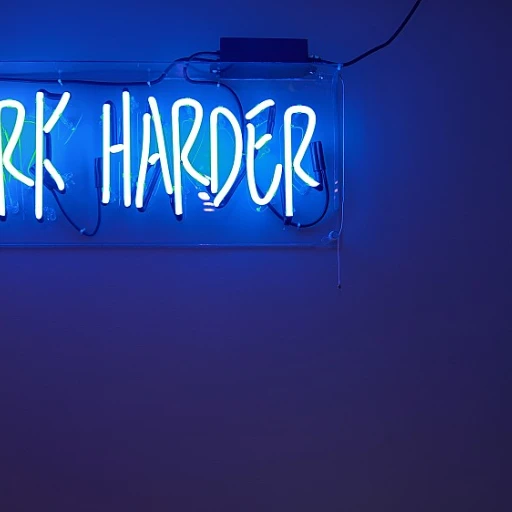Understanding the Importance of Risk Management
The Growing Need for Risk Awareness
Risk management isn't just an optional extra for businesses; it's vital. Not understanding how to handle risks can lead to severe losses. Organizations often face unforeseen challenges that require careful navigation to prevent potential disruptions. According to McKinsey & Company, companies that actively manage risks efficiently outperform competitors.Today's business environment demands a proactive approach to risk awareness. To excel, C-suite leaders must be equipped with the right strategies to handle uncertainties. This doesn't just involve addressing visible threats but also focusing on underlying factors that might affect the business in the long run.
Why Risk Management Matters
The significance of a robust risk management structure isn't just about mitigating losses; it’s about seizing opportunities. Have a look at successful organizations across different industries - their advanced risk handling capabilities often translate to competitive advantages. As cited by Deloitte Insights, integrating risk management into business models has shown improved resilience and opportunity capitalization among firms.Effective risk management ensures a more stable environment for decision-making. It contributes to achieving strategic objectives by minimizing unforeseen setbacks. Through proper assessment and control processes, leaders can create a strong foundation that supports the business's vision and goals.
Don't wait for risks to hit before acting. Adopt a forward-thinking mentality that values anticipation and preparedness. To delve further into the intricacies of risk management strategies, you might want to check additional insights about mastering risk management for executives at Mastering Risk Management.
In conclusion, elevating risk awareness among C-suite members enhances both stability and strategic agility, setting a trajectory toward long-term success.
Identifying Potential Risks in Business Strategy
Finding the Unseen Threats
Spotting risks hanging over your business strategy isn't just about reading spreadsheets. It demands a keen eye for the unseen threats that could take root in various nooks and crannies of your organization. You might feel confident as you navigate your operations, but it’s what's lurking in unexplored areas that could trip you up. Consider your workforce. Are they agile enough to ride through an industry disruption? What if a competitor launches a game-changing service that wipes the floor with your current offerings? Identifying such strategic risks is crucial. According to a Deloitte survey, 91% of companies believe future risk will increase due to pressures like globalization and technological advancement. This puts identifying risk at the forefront of strategic initiatives.Playing Detective with Financial Audits
In your business, risk isn't always flashy and headline-grabbing. Sometimes it’s tucked away in the financials, waiting for a sharp financial audit to uncover it. Hubris can often disguise these risks, leading many leaders to ignore the mundane but crucial task of auditing. Risk may arise from inaccurate forecasting, currency fluctuations, regulatory compliance, or even internal fraud. And here’s a tool that can be vital in your investigative process: understanding the risks in financial audits. This can give you the clarity needed to unravel financial knots before they tighten around your business. Predicting what risks may impact you isn't about having a magical crystal ball—it's about knowing where to look and asking questions that challenge comfort zones. Use data, scrutinize market trends, and lean on your team's insights.Developing a Comprehensive Risk Management Framework
Crafting a Solid Strategy for Managing Risks
Building a roadmap for risk management can seem like assembling a puzzle without the box top picture. The risks are out there, lurking, and it's your job to pinpoint them and create a strategic masterpiece. A comprehensive framework is your first line of defense, setting the stage for detecting, assessing, and mitigating those risks that could throw a wrench in your business machine. The trick is to lay out a systematic approach, where each step in your framework builds upon the previous one. Start with risk assessment. Scrutinize every nook and cranny of your operations to root out those lurking threats. Consider both internal and external factors—economic shifts, regulatory changes, even supplier reliability. A solid risk assessment paints a clear picture of the landscape you're navigating, enabling you to steer the ship with confidence. Next, move on to risk evaluation. This step involves analyzing the severity and impact of identified risks. Will it hit your bottom line? Tarnish your reputation? Understanding potential impacts allows you to categorize risks based on their priority, focusing resources on what matters most. This evaluation is vital to ensure you're not caught off-guard by something that seemed innocuous. Now, comes planning. But we’re not talking about sticking post-its on the wall. This involves developing a strategy to mitigate said risks, like a contingency playbook for various scenarios. Know which risks to accept, transfer, mitigate, or avoid altogether. Allocate resources wisely and prepare response plans that can be activated at a moment’s notice, ensuring minimal disruption to your business operations. Finally, risk communication should not be ignored—clear, concise, and regular communication with all stakeholders helps in reinforcing the importance of risk management. Regular updates on risk status and the measures in place foster a transparent environment that encourages open discussion and collaboration. Creating a comprehensive framework is an ongoing process, much like maintaining a successful https://www.c-suite-strategy.com/blog/understanding-retail-shrinkage-what-it-means-and-how-to-combat-it. You build it, refine it, test it – and watch it protect and propel your business forward.Integrating Risk Management into Decision-Making Processes
Weaving Risk Management into Every Decision
When it comes to making decisions, risk management isn't just a box to check off. It's like adding a layer of armor to your strategic choices. By embedding risk management into your decision-making processes, you're not just reacting to threats but proactively setting your business up for success.
Consider a scenario where a company decides to expand into a new market. The excitement is palpable, but so are the risks. From regulatory hurdles to cultural differences, the potential pitfalls are numerous. By integrating risk management into this decision, you’re not just looking at the opportunities but also preparing for the challenges that might arise. This balanced approach can mean the difference between a successful expansion and a costly misstep.
Practical Steps for C-Suite Leaders
- Risk Assessment Workshops: Regularly hold workshops with your team to identify and evaluate potential risks. This collaborative effort ensures diverse perspectives and a comprehensive understanding of possible challenges.
- Scenario Planning: Develop different scenarios based on varying risk levels. This helps in understanding the potential impact of decisions and preparing contingency plans.
- Data-Driven Decisions: Use data analytics to predict risks and make informed decisions. This approach not only enhances accuracy but also builds confidence in the decision-making process.
Personal Touch: Learning from Experience
Imagine a CEO who once faced a critical decision about a major product launch. Initially, the focus was solely on the potential revenue. However, by integrating risk management, they identified a supply chain vulnerability that could have derailed the entire project. By addressing this risk early, the launch was a success, and the company reaped the rewards.
Such experiences underscore the importance of weaving risk management into every decision. It’s not just about avoiding pitfalls but about steering the company towards sustainable growth.
Final Thoughts
Incorporating risk management into your decision-making isn't just a strategy; it's a mindset. It's about being prepared for the unexpected and turning potential threats into opportunities. As C-suite leaders, embracing this approach can lead to more resilient and agile organizations.
Leveraging Technology for Risk Management
Embracing Technology for Smarter Risk Management
In the fast-paced world of business, technology isn't just a tool—it's a lifeline. When it comes to risk management, the right tech can be your secret weapon. Let's break it down and see how you can use technology to your advantage.
First up, think about data analytics. It's like having a crystal ball, giving you insights into potential risks before they become real problems. With advanced analytics, you can spot patterns and trends that might otherwise fly under the radar. Imagine being able to predict market shifts or supply chain disruptions before they hit—it's a game-changer.
Then there's automation. By automating routine tasks, you free up your team to focus on strategic thinking and problem-solving. It reduces human error and increases efficiency. For example, automated reporting tools can provide real-time updates on risk factors, allowing you to make informed decisions quickly.
Real-World Tech Applications
Let's talk about some real-world applications. Consider a company that uses blockchain for supply chain transparency. By tracking products at every stage, they can quickly identify and address any issues, reducing risk and increasing trust with their customers.
Or take cybersecurity. With cyber threats on the rise, investing in robust cybersecurity measures is non-negotiable. Tools like AI-driven threat detection can help identify and neutralize threats before they cause harm.
The Human Element
Of course, technology is only as good as the people using it. That's why it's essential to have a team that's not only tech-savvy but also understands the broader business strategy. Training and development are key here. Equip your team with the skills they need to leverage technology effectively, and you'll see a significant boost in your risk management efforts.
Remember, integrating technology into your risk management strategy isn't just about buying the latest software. It's about creating a culture that values innovation and is willing to adapt to new tools and processes. It's about being proactive, not reactive, and always staying one step ahead of potential risks.
Building a Risk-Aware Organizational Culture
Fostering a Risk-Savvy Team
Creating a risk-aware culture isn't just about ticking boxes. It's about weaving risk management into the very fabric of your organization. Picture a team that anticipates challenges and embraces opportunities with open arms. That's the kind of environment where innovation thrives.
Leadership's Role in Risk Awareness
Leaders set the tone. When the C-suite champions risk management, it trickles down to every corner of the company. Sharing stories about how risks were turned into wins can inspire your team to think proactively. Remember, it's not just about avoiding pitfalls; it's about seizing the moment when opportunity knocks.
Training and Communication
Training is key. Equip your team with the tools and knowledge they need to identify and manage risks effectively. Regular workshops and open discussions can demystify risk management, making it a part of everyday conversations. When everyone speaks the same language, collaboration becomes second nature.
Encouraging Open Dialogue
Encourage your team to voice concerns without fear. An open-door policy fosters trust and transparency. When employees know their insights are valued, they're more likely to speak up about potential risks. It's about creating a safe space where ideas can flourish and challenges are tackled head-on.
Recognizing and Rewarding Risk-Aware Behavior
Celebrate those who identify risks and propose solutions. Recognition can be a powerful motivator. Whether it's a shout-out in a meeting or a formal award, acknowledging efforts reinforces the importance of risk management. It's a reminder that everyone plays a part in the company's success.
Building a risk-aware culture is a journey, not a destination. It's about nurturing a mindset where every team member feels empowered to contribute. By embracing this approach, you're not just managing risks; you're creating a resilient organization ready to tackle whatever comes its way.














